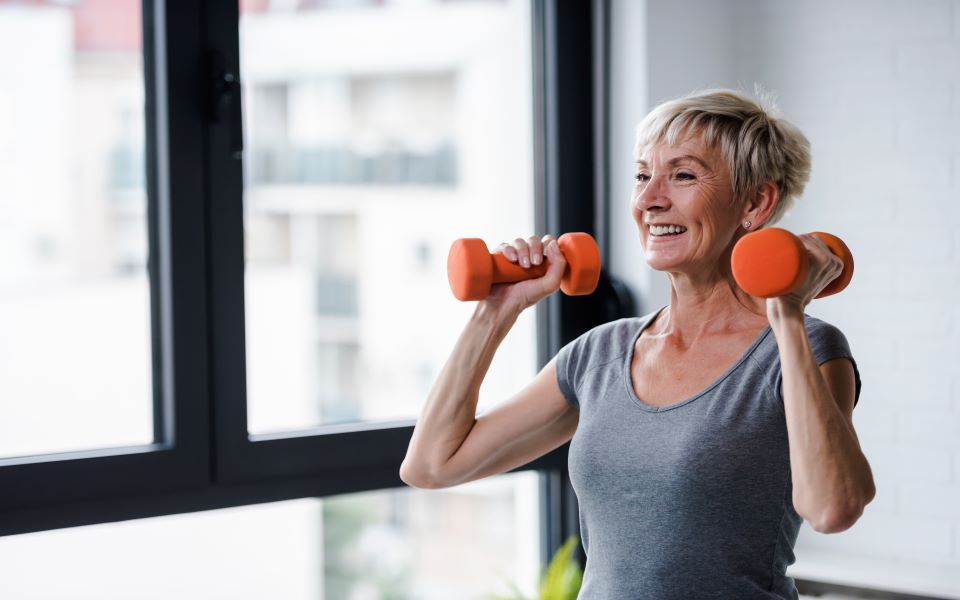Staying active is essential to a healthy senior lifestyle. Physical fitness can help you manage chronic conditions, retain independence and lower fall risk.
Balance, Flexibility and Strength
Those three qualities affect mobility, which is important to maintain as you age.
Balance: Your ability to stay on your feet or right yourself if you become dizzy or imbalanced may help you prevent falls that could cause fractures or breaks. Balance exercises include standing on one foot while raising your opposite leg and toe raises. Hold on to a counter or table before attempting those exercises hands-free.
Flexibility: Stiff joints can be painful and negatively impact mobility, so flexibility is crucial. Flexible joints make moving easier, especially when sitting, standing, bending and lifting. Each morning, roll your shoulders forward and backward, stretch your arms over your head, bring each knee to your chest and try to touch your toes.
Strength: Strong muscles support your joints and bones. Light weight training a few times a week goes a long way toward improving your stability. One- and two-pound hand weights are good for overhead arm raises and bicep curls. Resistance bands are another option for strength training, or use your body weight to challenge yourself with wall pushups.
How Exercise Improves Independence
Simple tasks such as lifting a laundry basket, climbing the stairs or carrying groceries can become taxing if you struggle with balance and strength. The better you move, the greater your chance of retaining your independence.
Keeping fit is important to avoid losing muscle mass and bone density. Staying active can also reduce the side effects of chronic conditions, including heart disease, high cholesterol, diabetes and high blood pressure.
Best Exercises for Seniors
The Centers for Disease Control and Prevention recommend that seniors 65 and older get at least 150 minutes of moderate-intensity exercise weekly. That includes two sessions of muscle strengthening and three sessions of balance training.
Here are some exercise suggestions:
- Yoga: Yoga loosens and stretches your muscles and eases tension. Breathing techniques also improve your lung capacity and endurance.
- Tai chi: This movement-based practice connects your body and mind. Tai chi allows you to develop flexibility, stamina and strength without high-impact exercises.
- Pilates: This type of training is good for toning muscles and easing joint stiffness. Pilates is modifiable and a good option for recovering from surgery and injury.
- Water aerobics: Exercising in water takes the pressure off your joints. Water creates a natural resistance to movement, so you may include strength training in your aerobic exercises.
- Walking and hiking: You can walk almost anywhere, alone, with a companion or even with your pet. It’s also a good way to get outside and enjoy fresh air and sunshine.
- Cycling: This is another good way to include low-impact cardio in your fitness routine. Cycling loosens your joints, strengthens your legs and gets your heart pumping.
Embassy Healthcare offers various fitness programs to keep residents physically active and engaged. Call 216-378-2050 or contact us online for more information.

